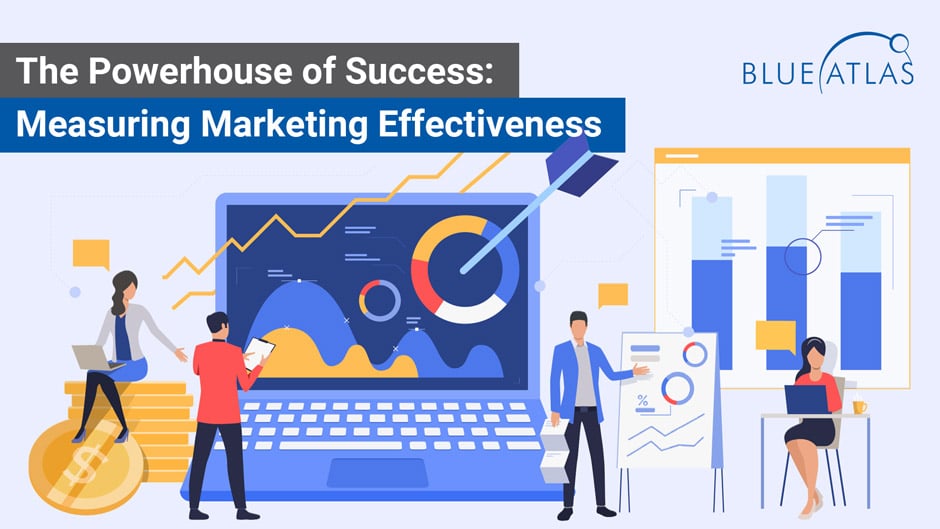For any business leader in the digital age, gauging the effectiveness of their marketing initiatives is not just another line item on a checklist. Instead, it’s a vital process that serves as the foundation for informed decision-making, streamlined resource allocation, and ultimately, sustainable business growth. This article serves as your comprehensive guide, unveiling the secrets of measuring marketing effectiveness and setting you on the path of achieving your business goals.
Navigating the Marketing Effectiveness Landscape
In this extensive guide, we’ll walk you through the various facets of marketing effectiveness, from understanding its crucial metrics to exploring its role in digital marketing. We’ll take a deep dive into evaluating marketing campaigns, study real-life cases of successful marketing effectiveness measurement, and even delve into how a marketing strategy consultant can guide you towards enhanced effectiveness. In essence, this guide aims to transform you from being a mere participant in the marketing process to being its master conductor.
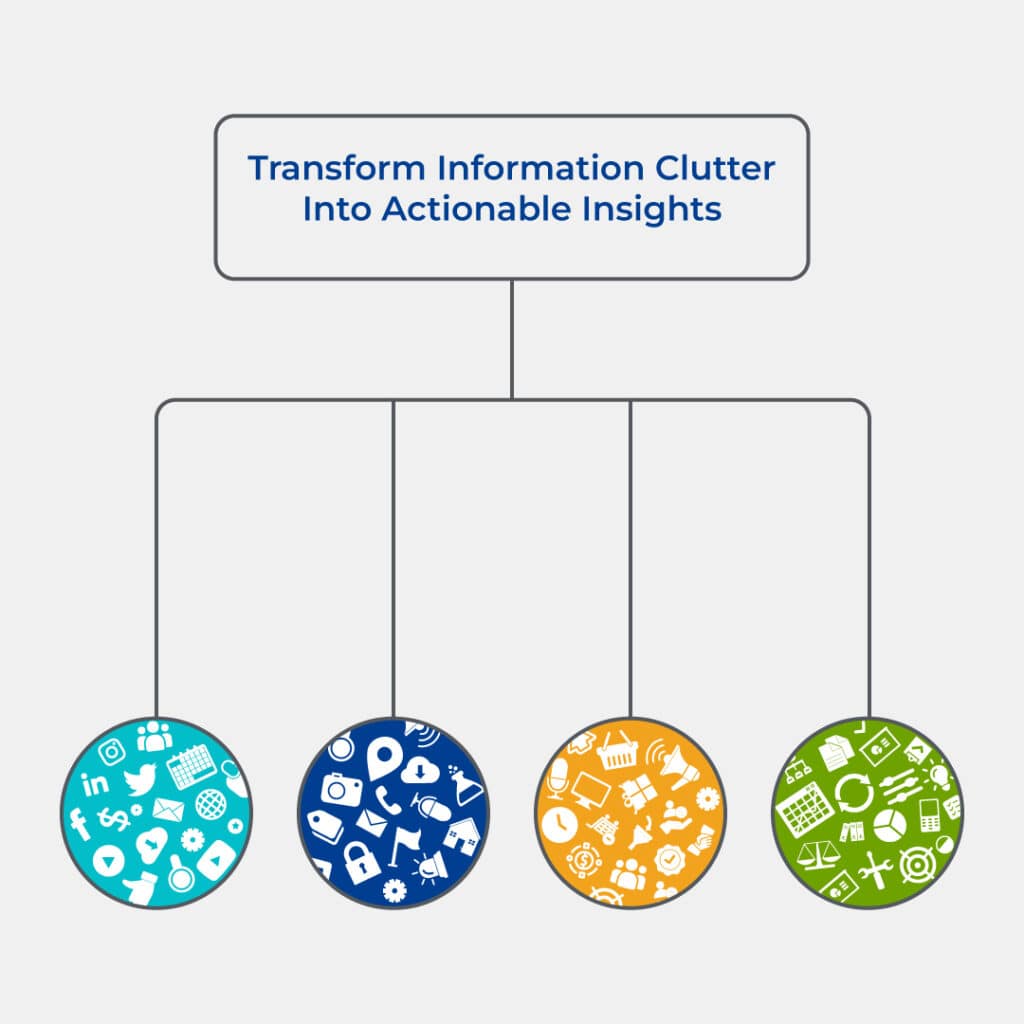
The Concept of Marketing Effectiveness
Decoding Marketing Effectiveness
Marketing effectiveness is the measure of how marketing actions positively influence the final business outcomes, from raising brand awareness to driving sales. It’s the degree to which your marketing efforts fulfill their intended objectives and contribute to your overall business goals.
The Lifeline of Business Growth: Measuring Marketing Effectiveness
Why the emphasis on measuring marketing effectiveness? The answer lies in the fact that it’s crucial for business growth and sustainability. It offers tangible evidence of what’s working and what’s not, enabling you to allocate your marketing budget effectively. By identifying your high-performing marketing activities, you can invest more in those areas and cut back or refine the underperforming ones, thereby ensuring you get the highest possible return on your marketing investments.
Understanding Key Marketing Effectiveness Metrics
Diving into the Marketing Metrics Universe
Marketing metrics are numerical measures that help businesses evaluate the success of their marketing efforts. They provide objective evidence of the effectiveness (or lack thereof) of your strategies and campaigns. Understanding and accurately interpreting these metrics is a cornerstone of successful marketing. This section will take you through a deep dive into some of the more often used important metrics, what they are, and why they matter to your business.
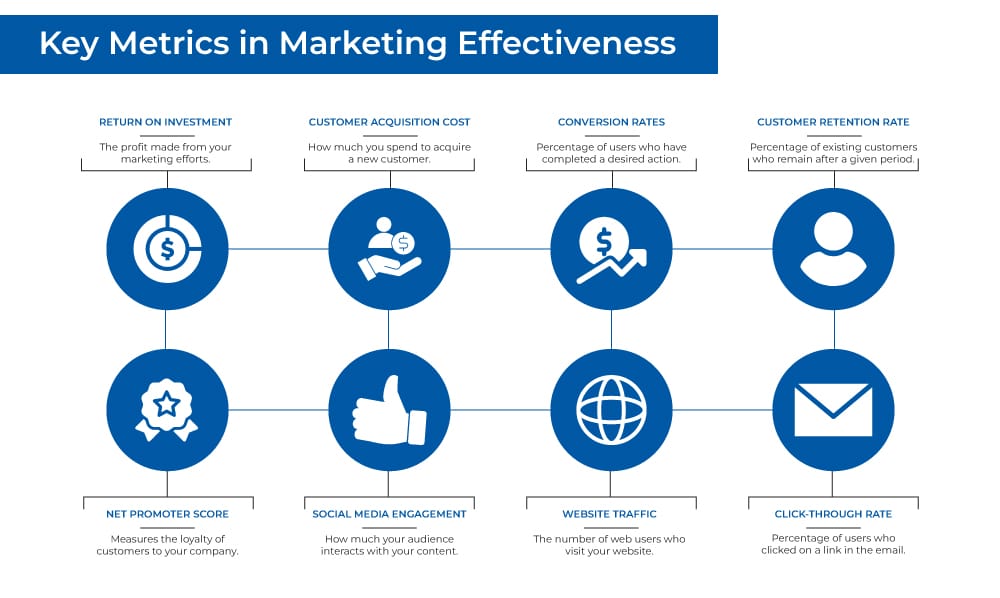
Key Metrics Explained
1) Return On Investment (ROI)
One of the most significant metrics is the Return on Investment (ROI). It calculates the profit made from your marketing efforts compared to the cost of those efforts. A positive ROI indicates that your campaign is profitable, while a negative one signifies a loss.
2) Customer Acquisition Cost (CAC)
Another critical metric is the Customer Acquisition Cost (CAC). It tells you how much you spend to acquire a new customer. Understanding this number helps you gauge whether your customer lifetime value exceeds the CAC, an essential determinant of long-term profitability.
3) Conversion Rates
Conversion Rates are the ratio of users who take the desired action (like making a purchase, filling a form, or subscribing to a newsletter) to the total number of visitors. High conversion rates typically indicate that your marketing message resonates well with your audience and your call-to-action is compelling.
4) Customer Retention Rate (CRR)
The Customer Retention Rate is an important metric that measures the number of customers a company has managed to retain over a certain period, reflecting the effectiveness of customer satisfaction and loyalty initiatives. A high CRR usually indicates satisfied customers who are likely to make repeat purchases, becoming a steady source of revenue. Businesses can calculate CRR by dividing the number of customers at the end of a period by the number of customers at the start, then multiplying by 100 to get a percentage.
5) Net Promoter Score (NPS)
The Net Promoter Score gauges customer satisfaction and loyalty by asking customers one simple question: “On a scale of 0-10, how likely are you to recommend our company/product/service to a friend or colleague?” The responses help categorize customers into Promoters (9-10), Passives (7-8), and Detractors (0-6). The NPS is then calculated by subtracting the percentage of Detractors from the percentage of Promoters. A high NPS signifies a large number of satisfied, loyal customers who can become brand advocates.
6) Social Media Engagement
In the digital era, social media engagement is a crucial metric that helps businesses measure the effectiveness of their social media marketing efforts. This includes likes, shares, comments, retweets, and follows. High social media engagement signifies a strong connection with the audience, increased brand visibility, and the potential for higher conversion rates.
7) Website Traffic
Website traffic is another key metric that gauges the effectiveness of both your digital marketing and broader marketing campaigns. A higher number of website visits often implies successful SEO and content marketing efforts, attracting potential customers to your site. Additionally, analyzing the sources of website traffic (direct, organic, referrals, social, paid) can provide insights into which marketing channels are performing best.
8) Email Open and Click-Through Rates
For businesses utilizing email marketing, open rates and click-through rates (CTR) are crucial metrics. The open rate measures the percentage of recipients who open the email, while the CTR represents the percentage of those who clicked on a link within the email. High rates suggest that your email content is compelling and resonates with your audience, while low rates may indicate a need for improved subject lines or more engaging content.
This is by no means an exhaustive list of metrics as we have used this many for just one tactic. The purpose of this list is to give you an understanding of many key metrics you may hear kicked around in marketing meetings and happy hours.
Choosing the Right Metrics
The metrics you choose to monitor and analyze should depend on your specific business goals and campaign objectives. For instance, if you are running a brand awareness campaign, metrics like reach and impressions might be more relevant. However, for a sales campaign, you’d want to focus on metrics like conversion rates and sales revenue.
Alignment with Business Goals
Moreover, it’s essential that your marketing metrics align with your overall business goals. For instance, if your business goal is to increase market share, your marketing efforts should focus on acquiring new customers, and your key metrics could include new customer growth rate and market share.
Avoiding Pitfalls
Finally, while metrics are invaluable in measuring marketing effectiveness, there are potential pitfalls to be aware of. It’s crucial not to become overly focused on “vanity metrics” – numbers that look good on paper but don’t contribute to your bottom line. An example of this could be having a lot of website traffic, but if they are not converting, then high traffic numbers are meaningless. Furthermore, don’t rely solely on quantitative metrics. Qualitative insights, like customer satisfaction and brand perception, also play a pivotal role in understanding your marketing effectiveness.
Navigating the sea of marketing metrics is no small task. It requires a clear understanding of your business goals, careful selection of relevant metrics, and a commitment to ongoing measurement and analysis. But when done right, it can unlock invaluable insights into the effectiveness of your marketing efforts.

Measuring Digital Marketing Effectiveness
The Digital Marketing Landscape: Challenges and Opportunities
In the age of the internet, digital marketing has emerged as a crucial tool for businesses. While it provides a wealth of opportunities to reach and engage audiences, it also poses unique challenges when it comes to measuring effectiveness. For instance, digital channels often overlap, making it hard to attribute conversions to a single source. However, with the right tools and techniques, these challenges can be turned into opportunities for learning and improvement.
Exploring Digital-Specific Metrics
Digital marketing offers a wide range of specific metrics to assess the effectiveness of your campaigns. Key among them are Click-Through Rates (CTR) and Bounce Rates.
CTR measures the percentage of people who clicked on your ad or link compared to the total number of viewers. It is a crucial metric for understanding if your content is compelling enough to prompt an immediate response.
On the other hand, Bounce Rate refers to the percentage of visitors who leave your website after viewing only one page. A high bounce rate might suggest that while your marketing attracted people to your site, something deterred them from exploring further. This could be due to reasons like poor website design, non-engaging content, or a difficult navigation system.
Harnessing Tools and Techniques for Tracking Digital Effectiveness
To effectively measure digital marketing efforts, you need the right tools to track performance. These can range from simple built-in analytics on social media platforms to more comprehensive digital analytics software.
For example, UTM parameters are a simple yet effective tool. By adding UTM parameters to your URLs, you can track the effectiveness of various campaigns, content, and even individual links in directing traffic to your website.
The Power of Analytics Software
More comprehensive analytics software, like Google Analytics, provides deeper insights into user behavior. With this tool, you can understand the entire customer journey, from the moment a user lands on your site to the point they convert. You can see which pages are most visited, the average time spent on your site, the sources of your traffic, and much more.
Leveraging Data from Digital Platforms
Other platforms such as social media sites also offer built-in analytics that can provide valuable insights. Facebook Insights, Instagram Insights, and LinkedIn Analytics provide information about post engagement, audience demographics, optimal posting times, and more.
However, merely collecting this data isn’t enough. The key to measuring digital marketing effectiveness lies in interpreting this data correctly and transforming it into actionable insights. You can use the information to understand what’s working and what’s not, and consequently, tweak your strategies for better results.
Measuring digital marketing effectiveness is both an art and science. While the sheer volume of data available can be overwhelming, with the right tools and a strategic approach, businesses can reap significant benefits. Ultimately, the goal is not just to collect data but to leverage it to create more engaging, effective marketing strategies.
Evaluating Marketing Campaign Effectiveness
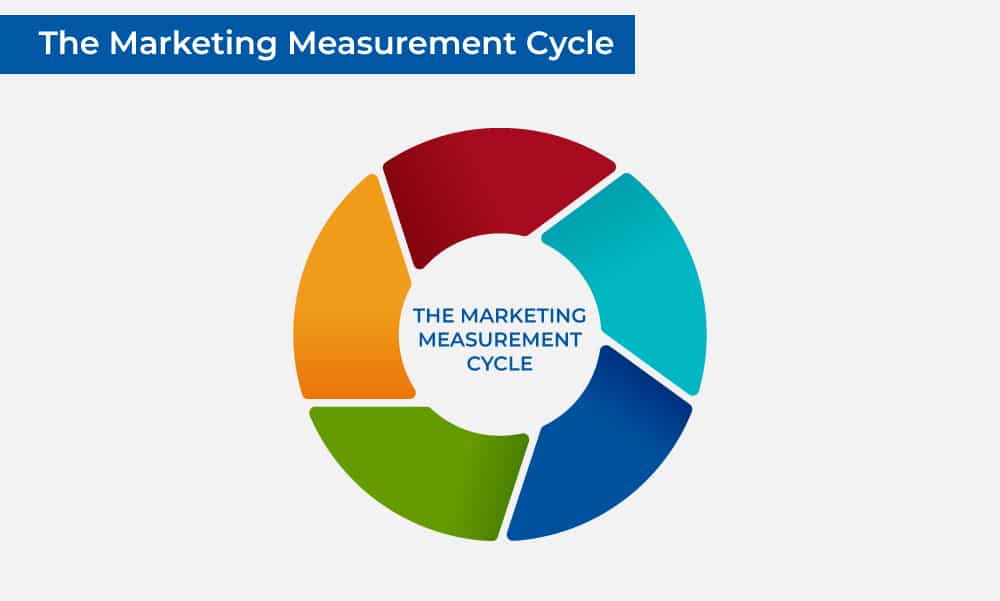
Ongoing Measurement vs. Campaign-Specific Evaluation
Before we delve into the specifics of campaign evaluation, it’s essential to distinguish between ongoing measurement and campaign-specific evaluation. Ongoing measurement involves tracking performance metrics regularly, irrespective of individual campaigns. It gives a broad overview of the performance of your marketing efforts and helps identify long-term trends and patterns.
In contrast, campaign-specific evaluation focuses on the effectiveness of a single marketing campaign. It involves setting specific goals for a campaign, tracking relevant metrics during its run, and analyzing the results to gauge success. While ongoing measurement provides the big picture, campaign-specific evaluation offers detailed insights into specific tactics and strategies.
Setting Measurable Goals for a Marketing Campaign
The first step in evaluating campaign effectiveness is setting clear, measurable goals. These goals, also known as Key Performance Indicators (KPIs), serve as benchmarks to compare your campaign’s actual performance against your expectations.
For instance, if your campaign aims to increase website traffic, your KPIs could be the number of new visitors or the total number of page views. If your campaign is designed to boost sales, the number of conversions or the overall sales figures during the campaign period could be your KPIs. The key is to choose KPIs that align with your campaign objectives and are quantifiable.
Techniques for Collecting and Analyzing Campaign Data
There are various techniques to collect and analyze campaign data. Tools like Google Analytics can be used to track website metrics, while built-in analytics on social media platforms can measure engagement metrics.
You can also use surveys or feedback forms to gather qualitative data. While harder to quantify, such data can provide insights into aspects like customer satisfaction or brand perception, which might not be captured by quantitative metrics.
Once collected, this data needs to be analyzed to assess campaign performance. Here, it’s important to consider both the absolute numbers and the relative changes. For instance, while a surge in website traffic might seem impressive, if it doesn’t translate into increased conversions, the campaign might not be as successful as it seems.
Examples of Effective Campaign Evaluation
Case Study 1: A Small Business Utilizing Email Marketing
Consider a small online retailer that embarked on an email marketing campaign to increase repeat purchases. They segmented their customer base into different groups based on past purchasing behavior and sent tailored product recommendations to each group.
The KPIs for this campaign were the email open rate, click-through rate, and the rate of repeat purchases. Using an email marketing tool, they tracked these metrics throughout the campaign.
The data showed an impressive open rate and click-through rate, indicating that the emails were well-received. More importantly, there was a significant increase in repeat purchases, showing that the personalized product recommendations effectively drove sales. The successful campaign led the retailer to adopt email segmentation and personalization as a key part of their ongoing marketing strategy.
Case Study 2: A Tech Start-up’s Social Media Campaign
A tech start-up decided to use social media to raise brand awareness and increase app downloads. They developed a series of engaging posts and videos explaining their product’s features and benefits, shared customer testimonials, and hosted live Q&A sessions.
The start-up set the KPIs for this campaign as the increase in followers, engagement rate, and the number of app downloads originating from social media channels. They tracked these metrics using social media analytics tools and the analytics feature of their app.
Although they saw a moderate increase in followers and engagement rate, there was a significant surge in app downloads that could be traced back to their social media channels. This result highlighted the effectiveness of their social media campaign in driving tangible results, not just digital engagement. The start-up used these insights to fine-tune their social media strategy, focusing more on demonstrating product utility and direct customer engagement.
Using Campaign Evaluation to Guide Future Strategy
The real value of campaign evaluation lies in its ability to guide future strategy. By understanding what worked and what didn’t, you can make data-driven decisions about your marketing strategy.
If a campaign achieved its goals, you might consider replicating the tactics used or scaling the campaign. On the other hand, if a campaign fell short, you might need to revisit your strategies or even your understanding of your target audience.
In essence, campaign evaluation is not just a way to gauge past success but a tool to drive future growth. By continually learning and adapting, you can ensure your marketing efforts are not just effective, but also improving with every campaign.

Further Example: Product Sales Company’s (PSC) Journey to Measure Marketing Effectiveness
PSC, a leading player in the tech industry, was navigating a competitive landscape. Their primary challenge? Ensuring that their marketing efforts were not only reaching the intended audience but also influencing buying decisions effectively. In a decisive move, PSC embarked on a journey to comprehensively measure and improve its marketing effectiveness.
The Measure to Success
To analyze the efficacy of their marketing strategy, PSC adopted a multi-pronged approach that included a mix of quantitative and qualitative methods.
Their quantitative strategy hinged on key metrics such as customer acquisition cost (CAC), customer lifetime value (CLTV), and return on investment (ROI). Using sophisticated analytics software, they meticulously tracked these metrics over a set period. They also paid close attention to digital marketing metrics such as click-through rates (CTR), bounce rates, and conversion rates, understanding the importance of their online presence in their industry.
Alongside, PSC recognized the value of qualitative feedback. They conducted regular surveys and interviews to gauge customer satisfaction and understand customer perceptions of their brand and products.
Impressive Results and Insightful Lessons
The detailed and focused measurement strategies yielded significant results. PSC saw a decrease in CAC and an increase in CLTV, indicating that they were attracting high-value customers at a lower cost. The improved ROI further confirmed that their marketing strategy was effective. Digital marketing metrics revealed that their online content was engaging and effectively driving conversions.
On the qualitative side, customer feedback provided valuable insights into how their brand was perceived, helping them make adjustments to their messaging and positioning.
These successes taught PSC that regular measurement wasn’t merely a way to justify their marketing spend. Instead, it offered strategic insights that directly impacted their bottom line.
From Feedback to Action
PSC was proactive in integrating feedback from their measurement process into their marketing strategy. Negative feedback was seen as an opportunity to improve. They held brainstorming sessions after each feedback cycle, discussing ways to enhance their marketing tactics based on customer opinions and concerns.
Long-term Impact and Continual Growth
PSC’s investment in measuring marketing effectiveness had profound long-term impacts. Not only did it improve their immediate marketing outcomes, but it also facilitated a culture of continual learning and improvement.
Their systematic approach to measurement helped them keep their finger on the pulse of their market, allowing them to adapt their strategies as consumer behaviors and industry trends evolved. This flexible, data-informed approach to marketing became a cornerstone of their enduring success.
In conclusion, PSC’s story highlights the power of effectively measuring marketing effectiveness. Their journey offers valuable lessons for other businesses, demonstrating that a thorough, data-driven approach to measuring marketing can lead to significant improvements in strategy, customer relations, and ultimately, business success.
Measuring Marketing Effectiveness Without a Big Team
Building on the case of PSC, you might wonder how businesses, especially those without a dedicated marketing analytics team, can effectively measure and improve their marketing effectiveness. This is where the expertise of a marketing strategy consultant comes into play.
The Craft of a Marketing Strategy Consultant
A marketing strategy consultant is a seasoned professional who brings expertise in marketing concepts, strategies, and tools. They work with businesses to identify marketing goals, align those goals with business objectives, and develop strategies to achieve them. They’re not just about strategy, though. One of their key functions involves digging deep into a company’s marketing metrics, identifying areas of weakness, and formulating solutions to enhance marketing effectiveness.
Spotting the Weak Links
A skilled consultant can critically assess your current measurement approach. They’ll audit your existing metrics, investigating whether you’re tracking the right indicators and using the best tools for the job. Through this meticulous process, a consultant can identify any gaps or inaccuracies in your data, or uncover opportunities for deeper insights that you may be missing. For instance, are you focusing too much on vanity metrics, like page views, and not enough on conversions or customer acquisition cost?
Creating a Measurement Blueprint
Once weaknesses are identified, the consultant uses their expertise to revise or build a comprehensive marketing measurement strategy. They’ll set clear, measurable marketing goals aligned with your overall business objectives. From there, they’ll help you select the best metrics and tools to track progress towards those goals. The end product is a blueprint for data-informed decision making that can guide your marketing efforts and gauge their effectiveness.
The Power of an External Perspective
The benefits of a marketing strategy consultant extend beyond their technical expertise. An external consultant brings a fresh perspective to your marketing efforts, unhindered by internal biases or preconceived notions. They can offer an objective analysis of your marketing effectiveness and provide unbiased recommendations for improvement.
The role of a marketing strategy consultant can be instrumental in improving a company’s marketing effectiveness. Whether it’s identifying weaknesses, building a robust measurement strategy, or providing an objective, external perspective, their expertise can be invaluable. As shown in the case studies, the benefits of working with a consultant can be substantial, leading to enhanced marketing outcomes and business growth.
Developing Marketing Strategies and Plans for Enhanced Effectiveness
The Necessity of Strategic Planning
Strategic planning plays a critical role in enhancing marketing effectiveness. It sets the course for your marketing initiatives, defining the ‘what,’ ‘how,’ ‘when,’ and ‘who’ of your marketing efforts. By meticulously outlining your marketing objectives, target audience, unique value proposition, and key tactics, a strategic plan provides a roadmap towards achieving your business goals. It aligns your marketing efforts with your business objectives and ensures that every step taken is in the right direction.
Crafting Goal-Centric Marketing Strategies
Developing effective marketing strategies involves having a laser focus on your business goals. Whether it’s boosting brand awareness, increasing market share, driving website traffic, or enhancing customer engagement, your marketing strategies should be tailored to achieve these objectives.
For instance, if your goal is to increase market share, your strategy might involve competitive analysis to identify gaps in the market, followed by targeted marketing campaigns to exploit these gaps. On the other hand, if your aim is to enhance customer engagement, your strategy might focus on content marketing or social media engagement.
Flexibility and Adaptability: Key Tenets of Planning
Marketing is not a static field. With shifting customer preferences, evolving market conditions, and emerging marketing channels, flexibility and adaptability should be at the core of your marketing planning. This means regularly reviewing and adjusting your strategies based on performance metrics and market dynamics.
For instance, if a particular marketing channel is not yielding the expected ROI, don’t hesitate to redirect resources towards more effective channels. Similarly, if a new trend or consumer behavior emerges, consider how it can be incorporated into your strategy for better results.
Techniques for Effective Marketing Plans
Developing an effective marketing plan involves several steps. Firstly, it involves understanding your target audience, their preferences, pain points, and decision-making processes. Next, it involves setting clear, measurable marketing objectives that align with your business goals.
Following this, you need to develop strategies and tactics to achieve these objectives. This could involve choosing the right marketing channels, creating engaging content, or leveraging marketing technology. Finally, your marketing plan should define the metrics you’ll use to measure success and the tools you’ll use to track these metrics.
Measuring the Effectiveness of a Marketing Strategy
The effectiveness of a marketing strategy is determined by how well it achieves your business goals. Key metrics to track could include brand awareness (through surveys or social media mentions), market share (through sales data), website traffic (through analytics tools), or customer engagement (through comments, likes, shares, etc.).
Remember that the best measure of effectiveness is not just short-term gains, but sustainable, long-term improvement. Therefore, it’s crucial to periodically review and adjust your strategy based on these metrics, ensuring that your marketing efforts continue to drive business growth.
Developing effective marketing strategies and plans involves strategic planning, goal-centric strategies, flexibility, effective planning techniques, and robust measurement. By mastering these elements, businesses can significantly enhance their marketing effectiveness, leading to improved business outcomes.
Marketing Effectiveness Analysis
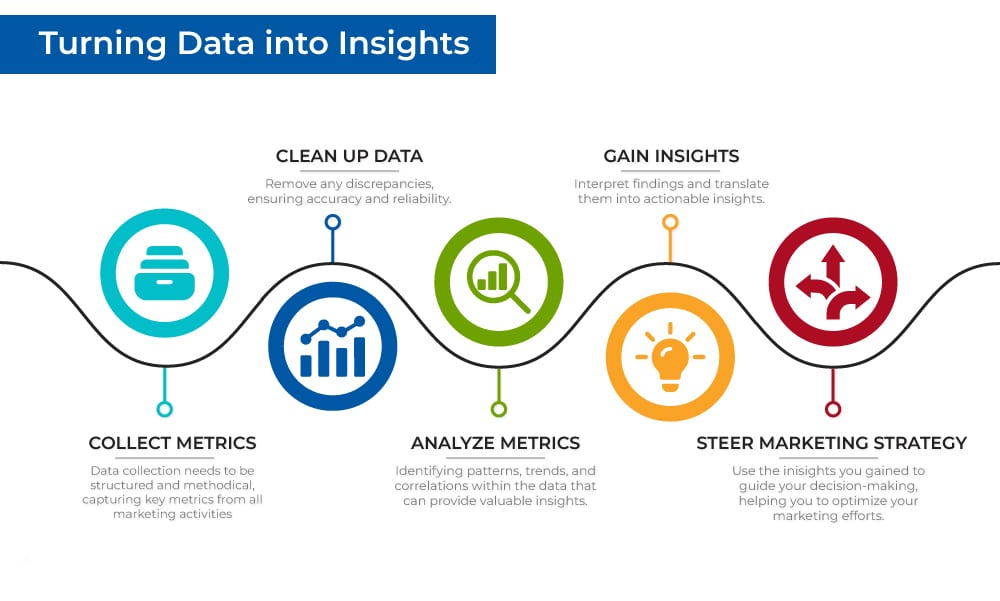
The Ongoing Journey of Marketing Effectiveness Analysis
The path to marketing effectiveness isn’t a one-time event; it’s an ongoing journey. Continuous analysis is vital to ensuring your marketing strategies are delivering the desired results and driving your business towards its goals. Regularly reviewing and interpreting your marketing data allows you to make informed decisions, optimize your strategies, and improve your overall marketing performance.
From Raw Data to Actionable Insights
Transforming raw data into actionable insights involves several stages. First, data collection needs to be structured and methodical, capturing key metrics from all marketing activities. Once gathered, this data needs to be cleaned and processed to remove any discrepancies, ensuring accuracy and reliability.
The next stage is data analysis. This involves identifying patterns, trends, and correlations within the data that can provide valuable insights. For instance, a spike in website traffic following a social media campaign could indicate a strong link between the two, informing future strategy.
However, raw data and simple trends aren’t enough; you need to interpret these findings and translate them into actionable insights. This could involve identifying why a particular marketing channel is performing well, diagnosing problems in underperforming campaigns, or predicting future outcomes based on current data.
Leveraging Marketing Analytics Tools
Marketing analytics tools play a crucial role in this process. Platforms like Google Analytics, HubSpot, or Tableau can help you gather, process, and analyze your data, turning a mass of information into digestible insights. These tools can track multiple metrics, visualize data, and generate reports, helping you to understand the performance of your marketing activities.
The Art of Visualizing and Presenting Marketing Data
Visualizing data is an essential part of marketing effectiveness analysis. It transforms complex data into easy-to-understand visuals, making insights more accessible and digestible. Techniques include charts, graphs, heat maps, or even more sophisticated data visualization tools.
Visuals not only make data more understandable but also more compelling. When presenting your findings to stakeholders or team members, a well-designed chart or graph can tell a story more powerfully than a spreadsheet full of numbers.
Using Insights to Steer Your Marketing Strategy
The end goal of all this analysis is to inform your marketing strategy. The insights you gain should guide your decision-making, helping you to optimize your marketing efforts.
If a particular marketing channel is performing exceptionally well, you might decide to allocate more resources to it. If a specific demographic is responding positively to your campaigns, you might choose to target them more specifically. Conversely, if a campaign isn’t delivering the expected results, your analysis could help you identify why and decide on a corrective course of action.
Marketing effectiveness analysis is a critical process that can help you convert raw data into insightful, strategic decisions. By regularly collecting, analyzing, and acting upon your data, you can continuously improve your marketing effectiveness, leading to more significant business success.
Predicting Trends in Marketing Effectiveness Measurement
Embracing the Future: The Evolving Landscape of Marketing Effectiveness Measurement
The world of marketing is ever-evolving, driven by continuous advancements in technology. These changes not only reshape how businesses interact with their customers, but also how they measure the effectiveness of their marketing efforts.

The Role of Cutting-Edge Technology in Marketing Measurement
In recent years, technologies such as artificial intelligence (AI) and machine learning have made a significant impact on marketing measurement. AI can analyze vast amounts of data more quickly and accurately than any human, uncovering trends and patterns that might otherwise be missed. Similarly, machine learning can help organizations automate data analysis and prediction models, continuously refining its algorithms based on new data and enabling more precise forecasting.
Looking Ahead: Predictions for Marketing Effectiveness Measurement
As we look to the future, these technologies will only continue to shape the landscape of marketing effectiveness measurement. In the next 5-10 years, we can expect a deeper integration of AI and machine learning in marketing analytics. This could lead to real-time, automated decision making, with marketing strategies dynamically adjusting based on performance data.
Moreover, with the rise of big data, businesses will have access to more nuanced insights about their customers. This will likely result in increasingly personalized marketing strategies, with effectiveness measured by individual customer engagement, satisfaction, and loyalty rather than broad demographic responses.
Staying Current with Evolving Marketing Measurement Trends
Staying up-to-date with these changes is crucial for businesses aiming to maintain or improve their marketing effectiveness. This can be achieved by attending industry conferences, participating in online forums and webinars, and staying informed via reliable marketing publications.
Moreover, consider investing in ongoing training and development for your marketing team. This not only equips them with the latest knowledge and skills but also encourages a culture of continuous learning within your organization.
The Importance of Lifelong Learning in Marketing
In the fast-paced world of marketing, continual learning and development are essential. As new technologies emerge and consumer behaviors change, marketers must adapt their strategies and their measurement techniques. By fostering a culture of curiosity and innovation, businesses can stay ahead of the curve, turning challenges into opportunities for growth and success.
The Journey to Improved Marketing Effectiveness
It’s important to remember that measuring and improving marketing effectiveness is a journey, not a destination. It requires patience, persistence, and a willingness to adapt and learn.
As you venture on this journey, remember that the path to improved marketing effectiveness lies in data-driven decision making, strategic alignment of marketing goals with business objectives, and continual refinement of marketing strategies based on performance metrics. Be bold, be curious, and never stop learning. The future of marketing effectiveness measurement is promising, and it’s waiting for you to seize it.
The Journey to Marketing Effectiveness: A Final Word
The importance of measuring marketing effectiveness cannot be overstated. It’s the beacon that guides your marketing strategies, ensuring they’re not just random shots in the dark but well-aimed efforts to achieve your business objectives. Measurement allows you to ascertain what works, tweak what doesn’t, and constantly evolve your marketing approach to keep up with changing market dynamics.
Tool for Business Growth
Business leaders should view marketing effectiveness measurement not as a chore, but as a strategic tool for growth. By leveraging advanced technologies, staying updated with industry trends, and nurturing a culture of learning, businesses can not only measure but also enhance their marketing effectiveness. This, in turn, can lead to improved customer engagement, higher ROI, and ultimately, business success.
We encourage you to start implementing the strategies and techniques discussed here. There is no one-size-fits-all solution, but with a data-driven approach and the right metrics, you can begin to see patterns and insights that will inform better decisions and enhance the effectiveness of your marketing initiatives.
Finally, we invite you to share your own experiences and pose any questions you might have about measuring marketing effectiveness. The journey to marketing success is one of constant learning and growth, and your insights might just be the spark someone else needs to refine their approach.
Remember, the path to enhanced marketing effectiveness is a continuous journey, and every step you take in measuring and understanding your marketing efforts is a stride towards sustainable business success.


